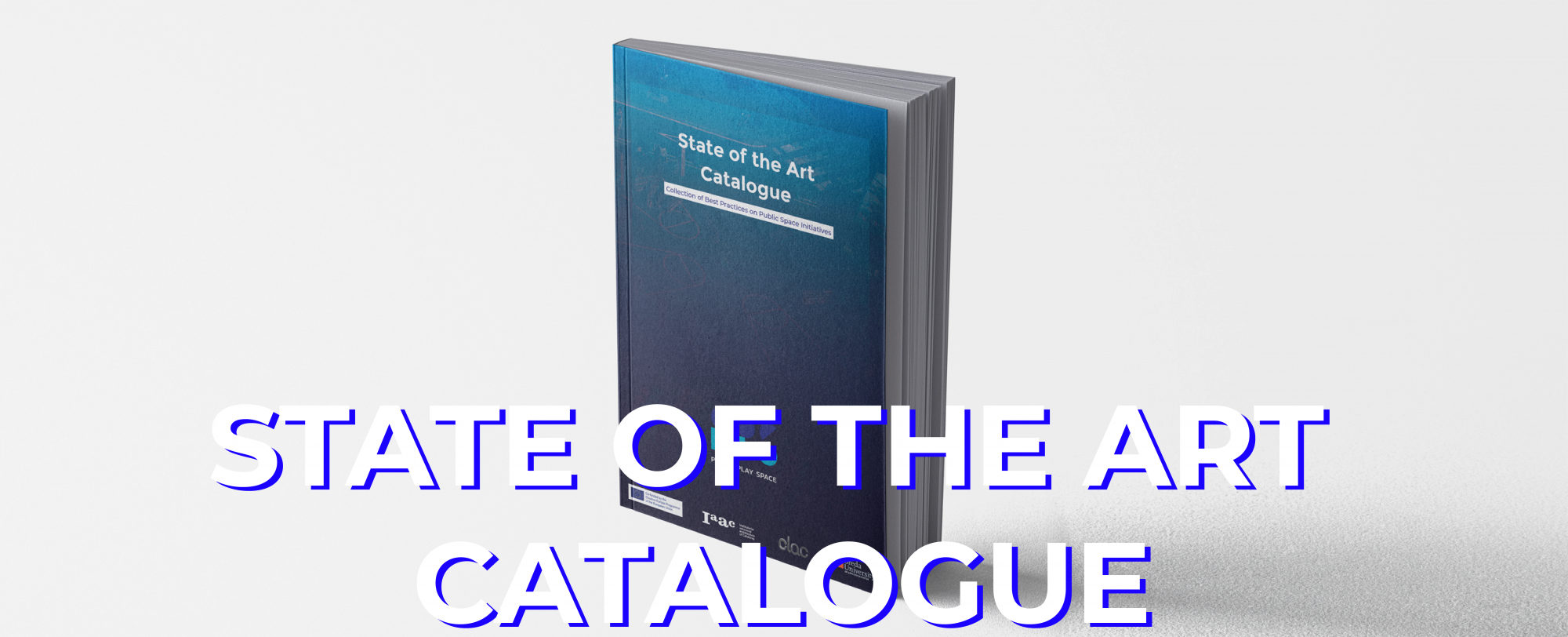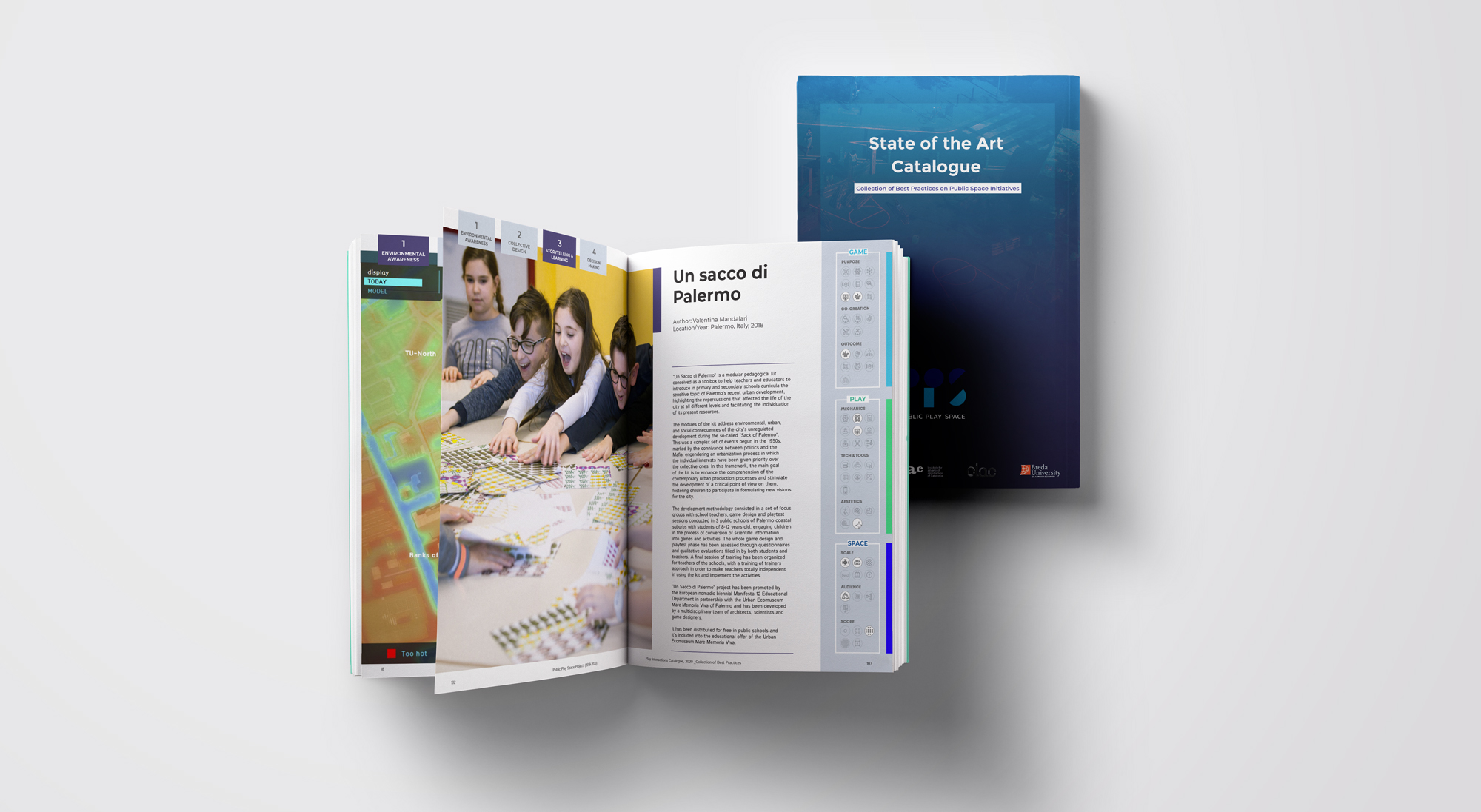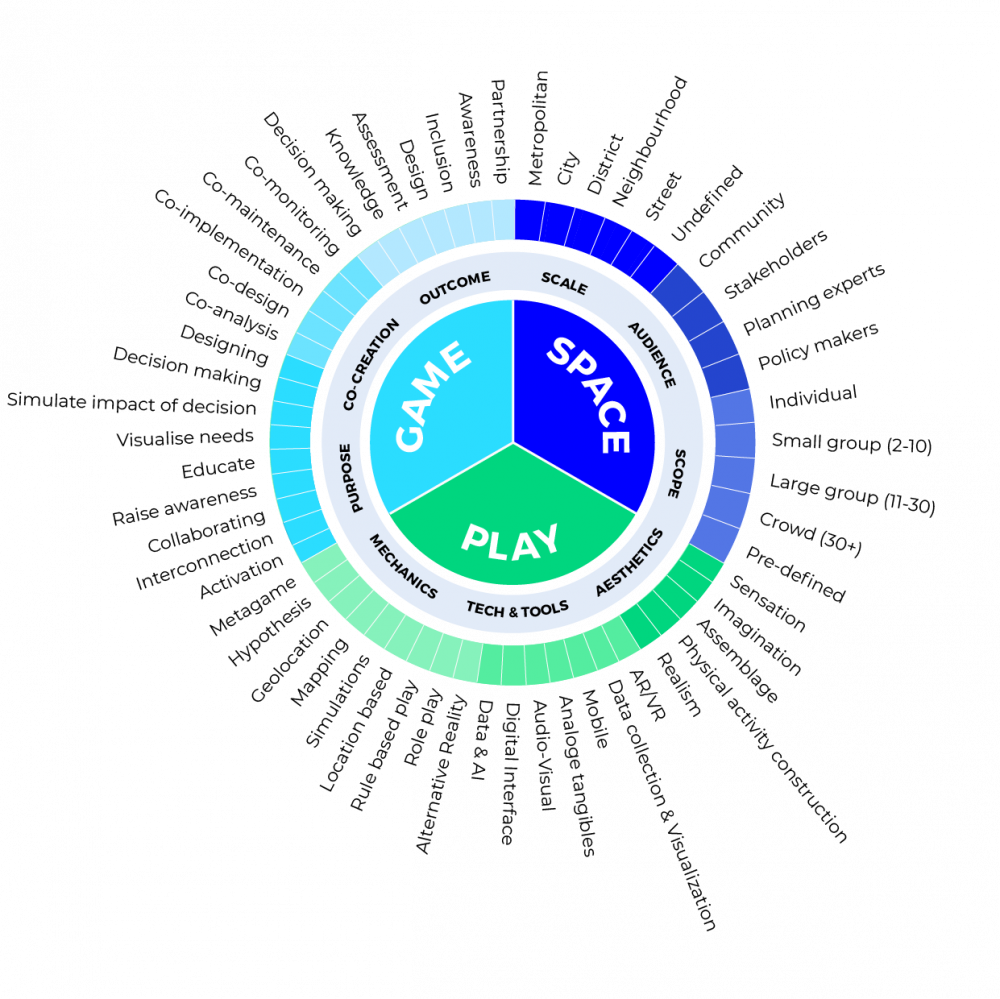| https://www.publicplayspace.eu/ |
The Public Play Space project is articulated into a series of actions targeted at exploring the process of development and use of innovative technologies and games for public space co-design. This State of the Art Catalogue represents the first action, collecting and analysing 30 best-practice case studies, offering a clear panorama of the emerging methodologies and strategies for the public space co-design through games and digital technologies. The Catalogue projects selected from the the results of an Open Call launched in December 2019 and from a competitive desk review selection developed by the PPS project partners.
With the objective of increasing the audience of the research, sharing the results with a wider public and engaging more experts in the process of collection of best practices, case studies, the PPS project launched the Public Play Space Community Platform, an open source online wiki platform, open to the contribution of more researchers, towards the development of a deeper knowledge on emerging methodologies and experiences innovative technologies and games for public space co-design.
The catalogue can be downloaded at this link.
Methodology
Projects are analysed and described using an innovative framework, articulated into 3 concentric levels of analysis and categorisation. This analytical approach allows a deeper understanding of projects that shows a high level of complexity and sophistication, enabling the reader to extract learnings on the different impacts and strategies.
At the same time, this categorization will enable the reader to navigate the project according to different features, actions, and properties that characterize them.
The first level of analysis describes the project based on the three categories of Space, Game and Play.
- Space Represents the spatial scale in which the project is executed and its audience.
- Game Represents the project’s main purpose.
- Play Represents the instruments used in the best practices.
Three sub-categories are identified for each one of them, and they are finally further described in a third level of analysis.
GAME
Purpose
Activation / Interconnection / Collaborating / Raise awareness / Educate / Visualise needs / Simulate impact of decisions / Decision making / Designing
Co-creation
Co-analysis / Co-design / Co-implementation / Co-maintenance / Co-monitoring
Outcome
Decision making / Knowledge / Assessment / Design / Inclusion / Awareness / Partnership
PLAY
Mechanics
Alternative reality / Role play / Rule based play / Location based / Simulations / Mapping / Geolocation / Hypothesis / Metagame
Technology and tools
AR/VR / Data collection and visualization / Mobile / Analoge tangibles / Audio-visual / Digital interface / Data and Artificial Intelligence
Aesthetics
Sensation / Imagination / Assemblage / Physical activity construction / Realism
SPACE
Scale
Metropolitan / City / District / Neighborhood / Street / Undefined
Audience
Community / Stakeholders / Planning experts / Policy makers
Scope
Individual (1) / Small group (2-10) / Larger group (11-30) / Crowd (30+) / Pre-defined
<<<<<<< GO TO "FROM SMART GAMES TO SMART CITY PLANNING" WIKI PAGE
GO TO "REDESIRE" WIKI PAGE >>>>>>>




